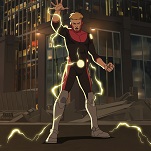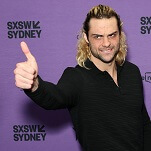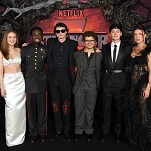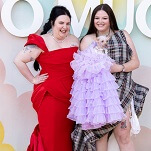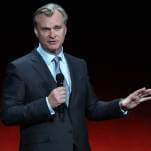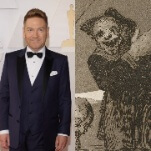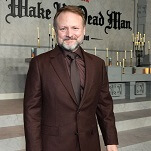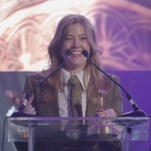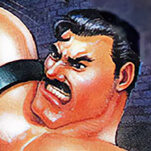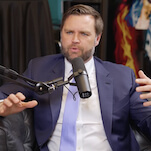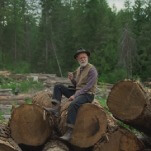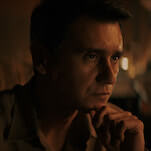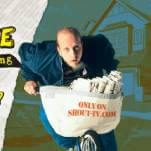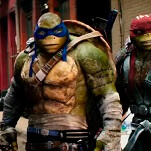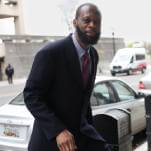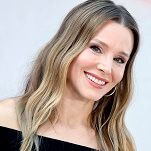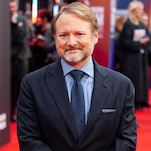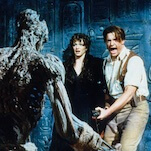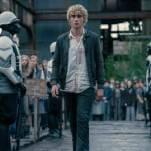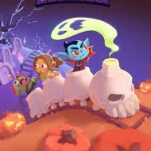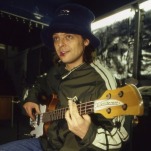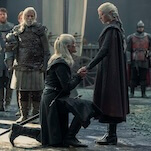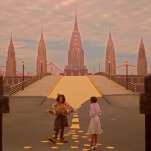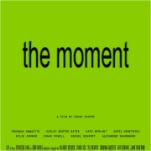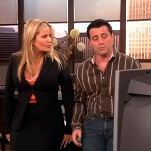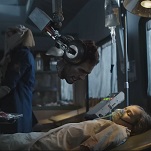I came out in a purple PT Cruiser. What a wonderful stage to tell the world I’m gay: in my best friend’s ugly but appropriately colored consumer hearse. That takes pride. He took it like a pro, and the next friends I told were in my silver Rav4, newly shorn of the pink racing stripes added by its previous owner. I don’t know what it is about the front seat of a car. The close quarters, us against the world? The no-pressure co-pilot seating, where you don’t necessarily have to make eye contact? The independence of the automobile, a sign of us growing up and taking the world into our own hands? The deciding factor was most likely the fact that there was nothing else to do at night in the suburbs except drive around and shoot the shit. Where else could we go?
I’ve put some miles between myself and who I was then, but it all came back to me in the second or so it took to realize what was going on when, on the fourth episode of The Middle’s seventh season, supernaturally sunny Sue Heck’s (Eden Sher) flamboyant friend Brad (Brock Ciarlelli) dropped his megawatt grin in the passenger seat of her car, took a moment, and told her he had some news.
We could all see where this was going. It was years in the making. Brad was introduced early in season one as Sue’s first boyfriend. At first Sue’s parents were uneasy, but as soon as they met Brad, they were cool with their only daughter dating already. Brad wasn’t just harmless. His effeminate voice, theatrical movements, and bubbly personality combined to signal to them and us that he was gay. The joke was on Sue for being the only one who didn’t see it. And I guess on Brad, a little, too.
As Brad and Sue grew up, it was harder and harder to buy them as credible teenagers who somehow don’t see what the rest of us do. At a certain point it stops being a running gag and starts being cowardice. Not that creators Eileen Heisler and DeAnn Heline made Brad a prancing gay joke. They didn’t write him into other relationships with women, for instance. It’s just that they also kept him from relationships with men.
The reluctance to let Brad come out like any other gay Indiana kid has something to do with The Middle’s old-fashioned vision. I don’t mean that as a pejorative. The Middle is part of a tradition of classic small-town family sitcoms, more Roseanne than Modern Family, more Andy Griffith than Dick Van Dyke. There’s nothing slick about The Middle, not even the banter, and the closest it comes to taking topical bait is in its multi-year portrait of a family that lived paycheck to paycheck through the Great Recession. It feels personal. It’s set in the fictional town of Orson, Indiana, a state where not too long ago business owners were publicizing their refusal to serve gay customers. Now Indiana has a kinder claim to fame in gay culture. In Orson, dad Mike Heck (Neil Flynn) toils at a quarry, mom Frankie (Patricia Heaton) is studying to be a dental assistant, and both struggle to make ends meet for their three kids. Middle child Sue has been particularly sheltered, the better for her to maintain her indomitable good cheer. It feels prankish to imagine Sue Heck confronting sex, even though she’s 18 years old.
But despite its advancing age, The Middle has been pushing out of its comfort zone. Storylines that would normally backfire by the end of the standalone are now introduced one week and allowed to build across episodes. The premiere ends on a disquieting down note, with Sue suffering loneliness at college. Later she meets some students who challenge her received ideas about patriotism and politics. She even faces sex like an adult—well, more like an adult than you might expect of someone whose bed is way more familiar with stuffed animals than boys. And then comes the latest proof that The Middle’s growing up. On Sue’s first visit back home, her best friend Brad comes out to her in the front seat of her car.
We’re going on decades of tearful TV coming-out stories now. It’s often about the risk or reassurance of telling family (Dawson’s Creek, United States Of Tara, Glee, Shameless, Happy Endings) or the self-acceptance of coming out to love interests (Ellen, Grey’s Anatomy, The Fosters). Telling friends tends to be secondary. Now that we’ve seen a gaggle of TV characters go through the process of discovering who they are and opening up to their loved ones, not just in television fiction but in reality TV and movies, there’s a growing sense that the coming-out story has been told to death. For several years now viewers have been calling for new stories about gay people, not just the trauma dramas of coming out or AIDS. So now we get tweaks to the format, like Josh being dragged out of the closet person by person on Please Like Me or Maura Pfefferman telling her adult children she’s trans on Transparent. Or, more often, we get stories that take place after queer characters have come out (Looking, Orange Is The New Black, Brooklyn Nine-Nine, Empire, How To Get Away With Murder). Or they don’t feel the need to come out at all (Manhattan, Hannibal, Wet Hot American Summer, How To Get Away With Murder). Or they’re Kalinda Sharma.
The result is a welcome expansion of the kinds of stories TV tells about queer people, but as The Middle shows, there’s still power in that basic story of a kid telling his friends he’s gay. Brad’s coming-out episode, “Risky Business,” doesn’t telegraph where it’s headed, but there are some small signs. Sue’s wearing a new necklace with a heart-shaped pendant colored like a rainbow. When she meets Brad, he acts just as awkward as she does, but she’s acting weird because she’s trying to keep a lid on something. So what is he hiding? Sue’s secret is that her roommate keeps demanding solo access to their room in order to hook up with guys, so Sue’s been sleeping in her car. To fight back, Brad pretends to be Sue’s boyfriend so they can get the room for once. Naturally Brad’s hetero pretense is doomed to failure. Even the plot is betraying his secret. He swiftly resigns himself to the truth. “Let’s face it. We played sex chicken and lost.”
That’s how they wind up in Sue’s car, several days’ worth of her outfits on the dash complementing Brad’s rainbow-colored plaid shirt. He apologizes. “It’s all my fault.” Go on. “I haven’t been in a play in months. I’m just not working that muscle. First thing I’m gonna do when I go home is go straight to Pizza Hut and reconnect with my old acting coach.” Sue tells him he was a great boyfriend and an even better friend, and he’s beaming at her. And then something about the privacy, intimacy, and camaraderie in the front seat of Sue’s car persuades Brad to open up. The moment his face drops you feel the butterflies in his stomach. We’d been looking at him from Sue’s angle this whole time, but suddenly we cut to his side. He’s leaning forward, filling the frame, and Sue’s just out of focus. This is his story, and we’re in his head now.
“There’s something I want to tell you,” he says haltingly. He looks back toward her. He tries to say something but nothing comes out. He kind of laughs to himself that he can’t get it out. It’s too real. How many times has Brad tried to come out and found himself unable to? That’s when Sue takes over for her best friend. “Brad,” she says, smiling, “I know.” She offers a big hug and he dives in. When they pull apart, Brad’s smiling wider than ever before. He can’t help himself. He’s irrepressible.
It’s notable that Brad doesn’t actually say the words. When Todd Glass came out on Marc Maron’s WTF podcast in 2012, he kept trying to avoid saying the words. Because they’re difficult and scary and official. But there’s acceptance in saying them out loud and hearing yourself say them. Maybe this is The Middle’s way of putting its own twist on an old standard.
But what makes The Middle so special is that it uses its specific circumstances to belt the old standards: Frankie crying over the royal wedding, her son winning the high school football game, Sue and a boy she likes bending symmetrically over a trash can to reach each other for a kiss at the Valentine’s dance. The best scene in the entire series is a car ride home from a relative’s funeral, a universal experience that becomes a humorous, heartfelt celebration of her peculiar life, the five Hecks staggered in a classic car shot. That’s what The Middle brings to the coming out story. It sees it as a Rockwell cover. The Middle doesn’t exploit the trauma or even awkward comedy, and it doesn’t even build a very special episode around the event. Instead The Middle frames coming out like trick-or-treating or getting your driver’s license, as a good, old-fashioned ritual of modern American life. It’s been a long time coming, but it was well worth the wait.
